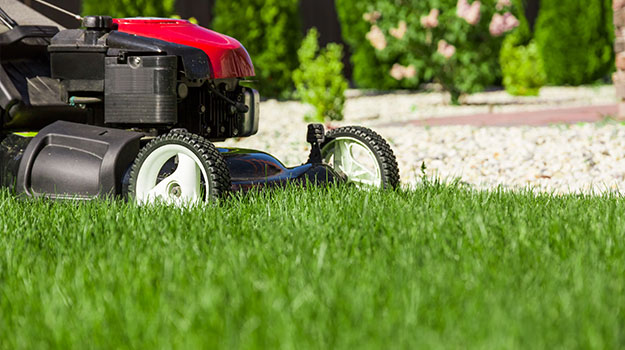
Mowing the lawn is simple. It involves a lot of footwork and a fair amount of perspiration about once every week, usually followed by a glass of ice-cold lemonade (or cold drink of your choice). This is the way most of us approach lawn mowing, but is it the right way? Not exactly.
Mowing the lawn is actually a skill, and performing the task correctly affects the appearance and health of that emerald green turf. You may have a pretty good idea what to do, but let’s stop to consider what not to do!
Never scalp your lawn
It may seem like a good idea, but as the grass struggles to recover, it actually grows faster, so any time-saving benefit is lost. Cutting the grass too short also means the soil dries out quickly and needs more water. It’s a better idea to stick to the one-third rule: Cut only about one-third of the length – generally about 3 inches – every time you mow.
Never wait too long to mow the lawn
It’s tempting to skip a weekly mowing every now and then, but remember the all-important one-third rule, as removing too much at one time stresses the grass. If that doesn’t convince you that regular mowing is the way to go, just think of clogged mower blades and matted clumps of clipped grass. If you’re gone for a few days or rain prevents you from getting the job done, mow one-third of the length, and then repeat a few days later. This will get you back on schedule.
Never mow with a dull blade
Not only is the job much harder, but dull blades damage the grass and increase water loss, making the grass more susceptible to disease and pests. As a general rule, have your mower sharpened twice during the season.
Never bag the clippings
You may think picking up the clippings means a neater, prettier lawn, but allowing the clippings to decay naturally returns valuable nutrients back to the soil, which means you can get away with one or two fewer feedings throughout the season. Additionally, leaving the clippings helps keep unwanted weeds in check. (Note: consider a mulching mower when your current mower needs replacing.)
Never over-fertilize
Too much fertilizer can damage the roots and burn the grass. Most lawn care professionals recommend one feeding in spring and one in autumn.
Never cut wet grass
Cutting soggy turf is a great way to clog your mower, but more importantly, walking (or riding, if you’re that lucky) compacts the soil and may damage the lawn. Mowing is easier when grass is drier, as the blades stand upright and are easier to cut.
Do not mow in drought or dormancy
Never mow when the grass is overly dry, brown or dormant, or when the weather is extremely hot. You can do considerable damage to the dry, brittle grass, especially during drought conditions.



